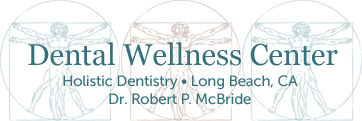Mutual Responsibilities in Attaining Health
by Dr. McBride | Date Published: 2018-08-07 | Download PDF ![]()
After over 35 years in practice and being a continuing student with a goal of providing optimum service for my patients, I have developed a clear understanding of how I can best help them make prudent decisions relative to their oral health. It had to do with me becoming a teacher; after all, the word doctor originates from the Latin word “docere” meaning “to teach.” This is foreign to most dentists as we are not selected for dental school based on our teaching ability or intercommunication skills. Prior to the doctor becoming a good teacher, he must have accurate information and workable solutions to offer his patients through himself becoming a continuing student, as dental school is only a primer that leaves the graduate with just the basics of cleaning, repairing and replacing teeth. Becoming an effective teacher requires that the dentist make a transformation – a paradigm shift of sorts – because a teaching mode is in direct contrast to the predominant symptom treating, or remedial mode which is an offshoot of the medical model wherein the doctor is the authority, and the patient the sick supplicant. This has become so ingrained that it is not uncommon that many patients expect the doctor to take full responsibility for their health, as they have also been trained within this predominant mode.
This transformation requires that the dentist be energized from a basic passion of knowing it is the right thing to do to be able to counteract this prevailing traditional mode. The good news is that more than ever in this information age people are becoming increasingly aware that the traditional “symptom treating” mode is not the answer, and are willing to share the responsibility for their health through seeking practitioners who will guide them with accurate information and workable solutions. Having gone through this transformation and having developed workable solutions for my patients from many years of continuing education and having learned from amazing mentors, I have discovered that teaching them involves more than solely conveying proper information. It requires teaching my patients what I know through involving them in a manner that lets them understand the rationale behind their problems and allows them literally to become “their own doctor,” directing their treatment based upon what they have learned, not solely because the doctor is an “authority.” Most new patients I see have no idea of the high probability that their headaches and neck pain could be related to their bite. Today, more people are learning that gum disease is related to systemic problems, and I have rarely seen two people with the same degree or type of gum disease – controlling it has a high educational component on the part of both practitioner, hygienist and patient. The practitioner and hygienist need to educate themselves first by evaluating its true nature through several assessments, i.e., phase contrast microscope analysis, laboratory oral biofilm testing, skill assessment, etc. prior to being able to teach the patient the true nature of their disease and the degree of involvement necessary towards a long-term solution. This is a mutual learning process that first requires that the practitioner learn all he can about the patient, and then translate it in understandable terms to the patient wherein their shared responsibilities are co-defined. This evolves into an interdependency rather than a dependency upon “the doctor,” as it is with the traditional health model.
This mode places a large onus on the doctor to become an effective teacher, but I believe it is the only way to actualize the mutual responsibilities that constitute the development of true health. It has been said that “health cannot be bought by the rich nor given to the poor.” My experience has taught me that true health requires high interest and mutual commitment on the part of both doctor and patient. If this mutual interest is absent, the game is over from the start. Therefore, I believe that it is the responsibility of the doctor to first discover whether the patient has the interest and passion to want to learn. When a patient has this interest, they become great students and partners in their health development as they learn the “whys” behind their problems. Trust is engendered along the way that allows them to truly understand all options of treatment available including their risks and benefits. When becoming healthy is viewed more as a process of learning and co- discovery rather than a series of treatment events, confidence is developed, demonstrable healthy changes occur, and the magic of long-lasting transformation appears.
©2024 Robert P. McBride DDS, Inc. All Rights Reserved.
